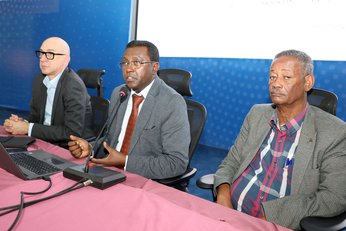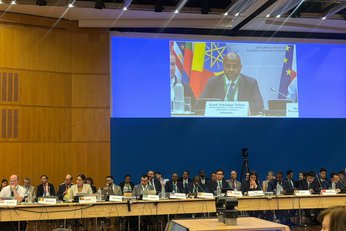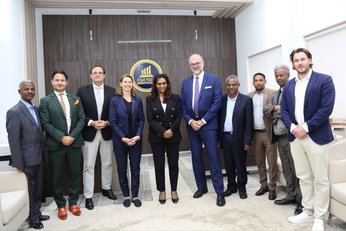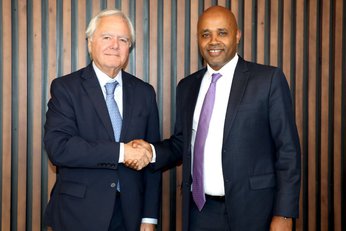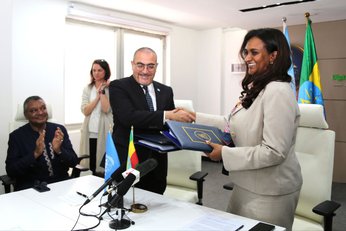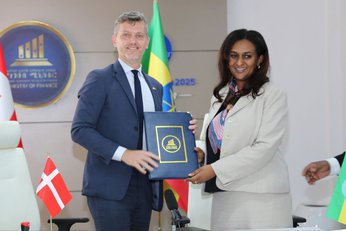Ethio - USA 120 years of Friendship and Economic Cooperation
Jan. 11, 2024
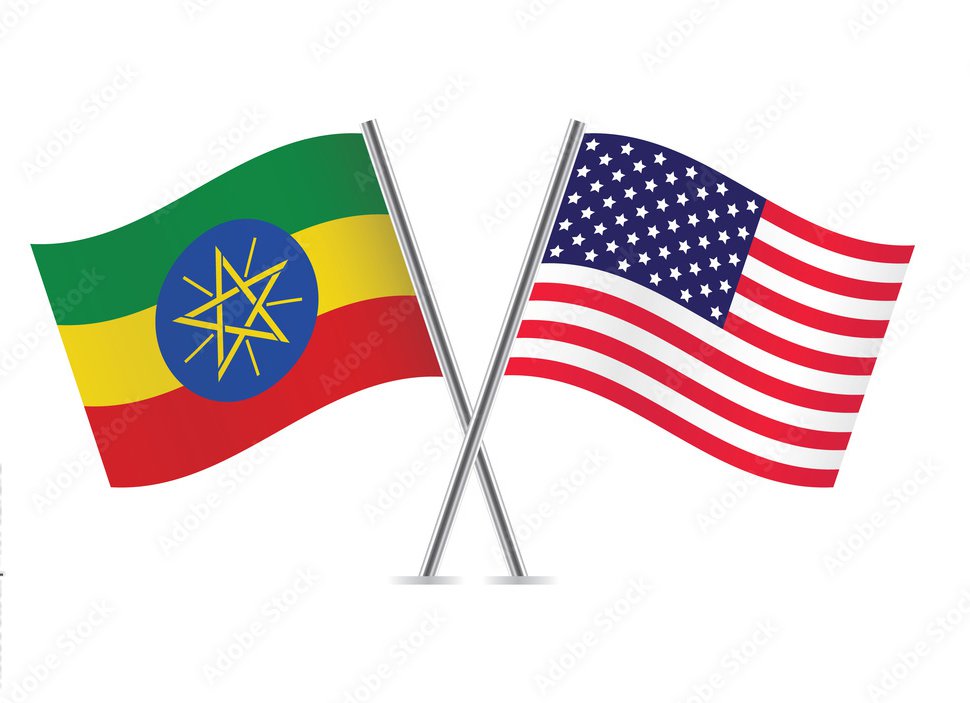
Ethiopia and the United States of America established their diplomatic and economic relation 120 years ago during Emperor Menelik II, after an American envoy Robert P. Skinner signed the first Ethio-USA bilateral treaty of commerce in which the two states agreed to host representatives to foster and strengthen the economic and friendly relations.
Ethiopia and the United States enjoyed multifaceted relation in the 120 years journey of diplomatic and economic engagement. The Ethio-America bilateral relation is one of the United States’ longest and closest in sub-Shara Africa which manifested in mutual understanding and economic cooperation that helped the improvement of the Ethiopian people livelihood.
In commemoration of Ethiopian and the United States longstanding diplomatic and economic relations, we would like to highlight the major development activities currently undertaken in all parts of Ethiopia that significantly touched the lives of millions of people living in rural and urban areas.
The United States contributed immensely for the development of Ethiopia in the past decades in multiple of sectors. In recent years, the United States government played crucial role in providing humanitarian assistance for millions of Ethiopians affected by manmade and natural disasters.
Ethiopia is one of the U.S. government’s largest assistance programs recipients in African continent particularly in the areas of health care, education, and food security through improving the capacity of Ethiopians to deliver basic services and promote an environment conducive to enhanced food security and resilience.
The U.S. is the largest bilateral contributor to humanitarian needs of Ethiopia and provides an average of over half a billion dollars per year for such purpose. Moreover, to humanitarian assistance, U.S. development assistance works to promote democracy, citizen-responsive governance, and broad-based economic growth and development.
Currently the USA has been operating in five major areas to promote the Ethiopian development goals. The intervention areas are: -
-
- Disaster risk management strengthened (Development Objective one)
- Resilience of vulnerable populations to key shocks increased (Development Objective two)
- Private sector led economic growth promoted (Development Objective three)
- Sustained improvement in essential service delivery outcomes focused on woman and girls (Development Objective four)
- Citizen response governance enhanced (Special objective)
There are more than 82 projects under the above five major areas and resources have been allocated based on the Six Years (2022-2027) Country Development Cooperation Strategic Agreement. The Framework Agreement earmarked a total grant amount of 2.063 billion USD to be financed both in bilateral and unilateral terms.
For the last seven years the USA disbursed more than $1.74 billion in different sectors. From the total amount, $180.8 million was disbursed to support Education, $773.7 million for health, and $502.6 million for supporting economic growth in Ethiopia. Additionally, $93.6 million was disbursed to improve good governance in Ethiopia.
The first Development Objective Agreements (DOAG) was implemented during 2011-2015. It was a framework agreement with total contribution of $1.54 billion aimed to support four major areas namely increased economic growth with resilience in rural Ethiopia, utilization of quality health services, quality education, and improve good governance or support objective.
Presently, the second DOAG (Development Objective Agreement) 2022-2027 is under implementation focusing on disaster risk management, resilience of vulnerable population to key shocks increased, private sector led economic growth, sustained improvement in essential service delivery outcomes focused on women and girls, and citizen responsive governance enhanced. DOAG 2022-2027 is a framework agreement with a total contribution of $2.063 billion aimed at supporting these five major areas.

